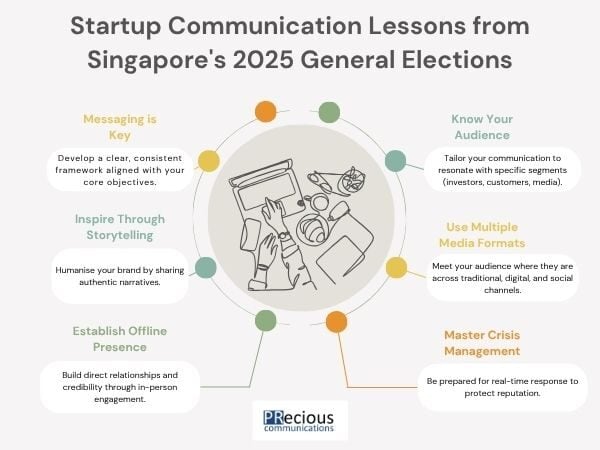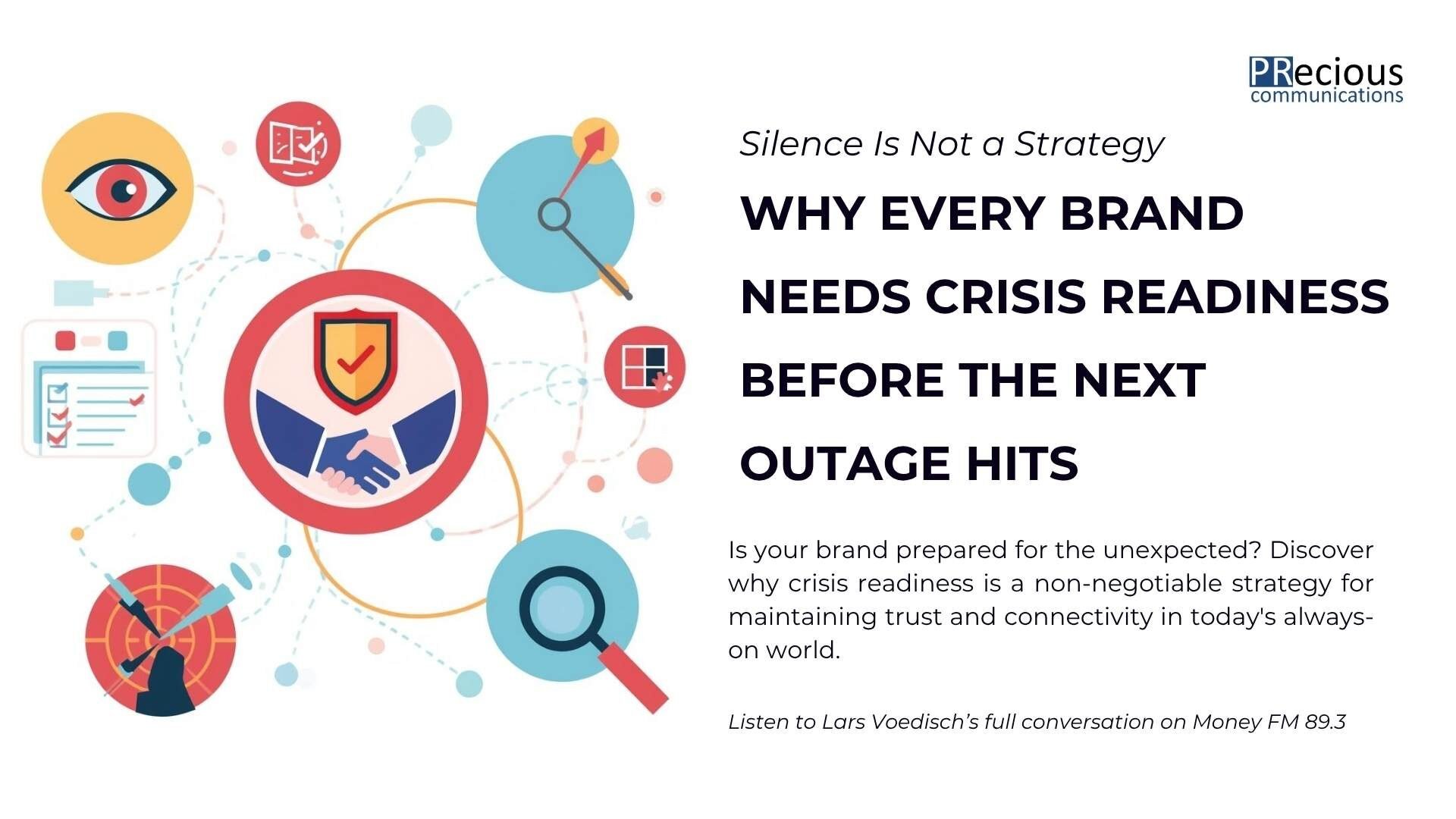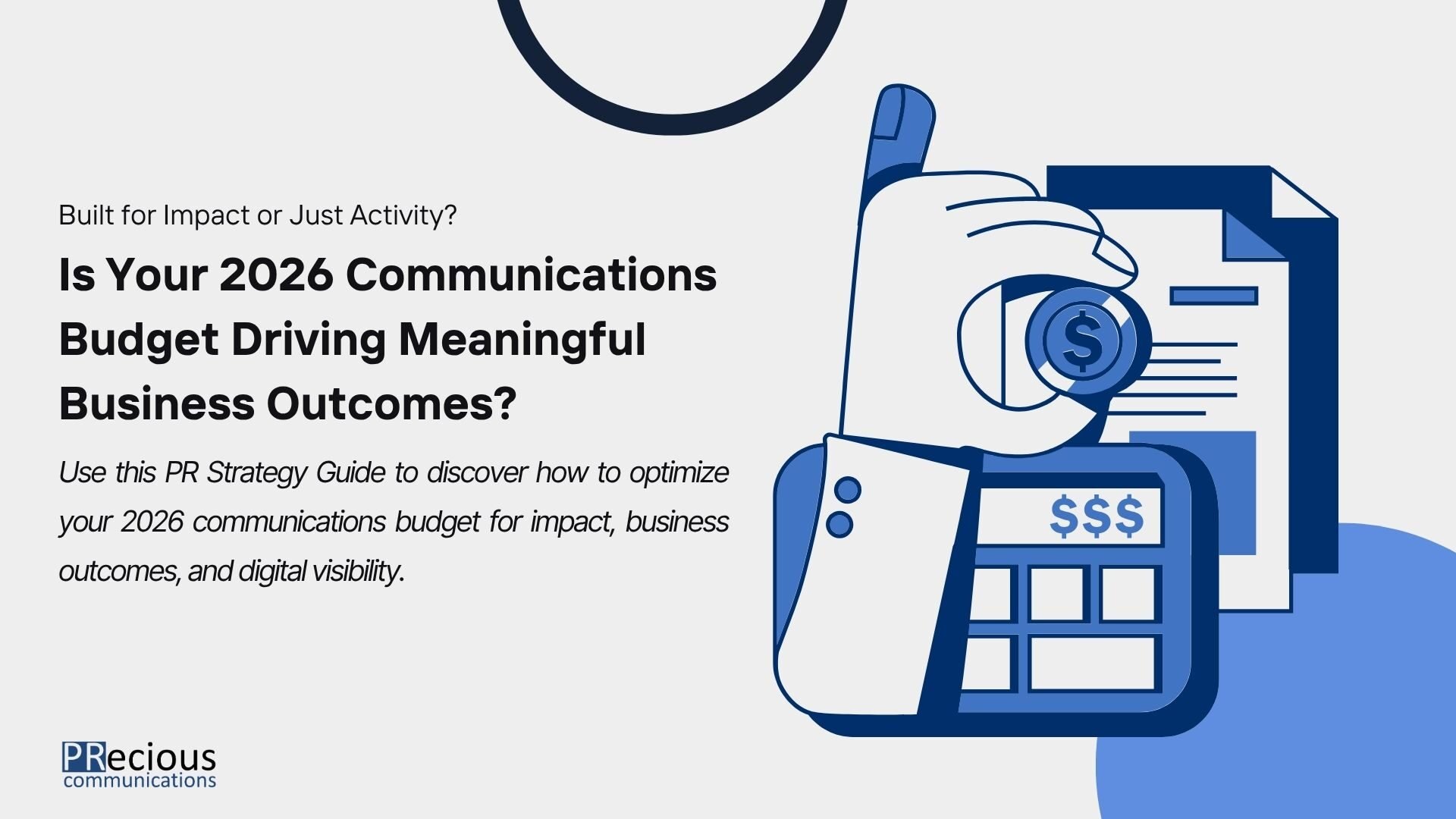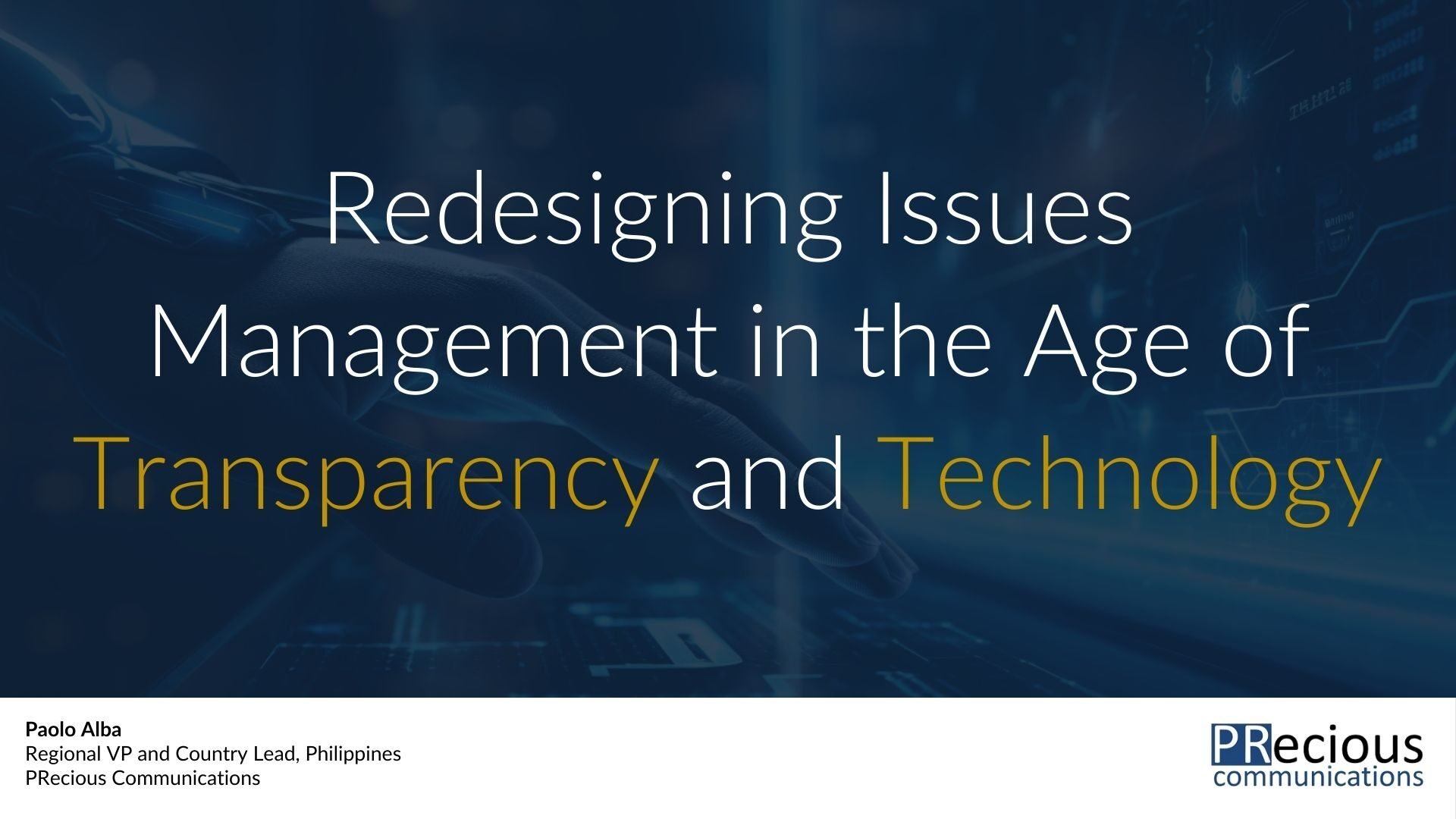To help startups and other fast-growing companies navigate today’s tricky landscape, PRecious Sparks has introduced our thought leadership series called “Reigniting the Spark.” In this first installment, we will share valuable startup communication lessons from Singapore’s recent general elections.
Understanding the Context: Singapore’s 2025 General Elections
Singapore’s General Elections are a pivotal point, marking a time of renewal for parliament and a reset for the various constituencies around the island. The 2025 elections were the 19th iteration in the nation’s history, still relatively fresh in our minds, especially with the recent swearing-in of Members of Parliament in late-May. The public presentation of how the elections unfolded offers a rich case study in modern communication.
Beyond traditional walkabouts and fiery rally speeches, media outlets extensively covered the entire process. Headlines zeroed in on everything from the announcement of new party candidates and party plans to the rollout of manifestos detailing each party’s vision for the country.
Significantly, this election underscored the evolution of communication channels. Engagement wasn’t limited to traditional media; content was propagated through a strategic blend of traditional, digital, and social platforms. From doorstop interviews and intricate profiling pieces of individual candidates to podcasts and social media content across platforms like TikTok and Instagram, the political landscape has truly become multi-dimensional. This shift is fueled by technology and the public’s evolving media consumption habits.
Despite these technological advancements and channel proliferation, effective communication remained the undisputed driving force for candidates and their parties. Whether executed through a televised interview, a press conference, or a physical rally, every strategic effort shared a singular, overarching objective: influencing the decision of their voters.
Why Strategic Communications Matter for Organisations
Indeed, the power of effective communication isn’t confined to the political sphere. A well-crafted communications strategy is absolutely essential for organisations of all sizes to effectively articulate their mission, vision, values, and thought-leadership within their respective fields.
This is acutely true in the dynamic world of startups and high-growth companies. Here, communications extend far beyond simply announcing a funding round or listing new investors. It’s a vital tool for differentiation, enabling emerging companies to cut through the noise and stand out amongst a crowded field of disruptors vying for attention. More importantly, strategic communication builds crucial credibility among peers, the media, potential customers, partners, and investors.
Drawing potent lessons from the recent Singapore general elections, let’s explore several fundamental principles of communications strategy in action and understand why they are critical when building a resilient, strategic communications plan for your organisation.
Key Startup Communication Lessons:
- Messaging is Key: Develop a clear, consistent framework aligned with your core objectives.
- Know Your Audience: Tailor your communication to resonate with specific segments (investors, customers, media).
- Inspire Through Storytelling: Humanise your brand by sharing authentic narratives.
- Utilize Multiple Media Formats: Meet your audience where they are across traditional, digital, and social channels.
- Establish Offline Presence: Build direct relationships and credibility through in-person engagement.
- Master Crisis Management: Be prepared for real-time response to protect reputation.

Table of Contents
- Understanding the Context: Singapore’s 2025 General Elections
- Why Strategic Communications Matter for Organisations
- Messaging is Key
- Know Your Audience
- Inspiration Through Storytelling
- Utilising Multiple Media Formats
- Establishing Offline Presence
- Crisis Management and Real-Time Response
- Implementing Startup Communication Lessons for Tangible Growth
- Frequently Asked Questions About Startup Communication Lessons
Messaging is Key: Defining Your Narrative
In the lead-up to the elections, the various political parties actively communicated their manifestos, clearly outlining the policies and changes they wished to introduce for the country. These manifestos presented the key considerations the public needed to understand to make informed decisions at the polls. In essence, they served as the cornerstone of each party’s messaging strategy, crucial for helping the public grasp what each party fundamentally stands for and ultimately influencing voter decisions.
Similarly, organisations must develop a robust, well-defined messaging framework. Whether communication is being delivered by the founder, a C-suite executive, or a corporate spokesperson, having a clear, consistent set of messages aligned explicitly with the company’s mission, vision, and core objectives is paramount. This strategic alignment ensures consistent, clear messaging across all media engagements and coverage, which in turn fosters essential trust amongst the industry, potential investors, and customers. Ultimately, strong, consistent messaging helps an organisation distinctly stand out with a memorable and authoritative voice.
Consider the crowded venture capital landscape today. While many notable firms share similar fundamental commitments to building the “next generation of disruptors,” their core language and voice can converge. Differentiation becomes vital. Savvy firms utilise a clear messaging strategy for their spokespersons to effectively distinguish themselves from peers by highlighting specific investment theses, sharing unique insights on the industries they specialise in, and offering distinct perspectives on the broader startup ecosystem across diverse markets.
Know Your Audience: Tailoring Your Message for Impact
During the election campaign, relying on a generic, one-size-fits-all messaging approach would not have been an impactful way to engage Singapore’s diverse public. Parties needed to meticulously tailor their messages, narrative, and overall communication style to best resonate with different voter segments and demographics across the island.
Likewise, organisations must adopt a targeted communications approach, specifically tailoring their messaging to best suit the various audience profiles critical to their success—such as investors, potential customers, strategic partners, and the media. This focused approach significantly helps to increase engagement levels and build a stronger affinity with the brand.
Taking startups as a prime example, announcing a fundraise or a major business milestone is a strong signal to investors and the business world, underscoring the company’s robust growth potential. However, these types of business-focused stories may not inherently appeal as much to broader, general audiences. This highlights the need for audience segmentation, a principle that leads us directly to our next crucial point.
Inspiration Through Storytelling: Connecting Emotionally
Many candidates in the recent elections were featured in detailed, in-depth profile pieces that shed light on their professional journeys, personal backgrounds, and what specifically influenced their decision to enter politics. These deeply human stories were incredibly effective in humanising the candidates, allowing them to connect with the public beyond partisan lines and helping voters see them as relatable individuals with their own aspirations, challenges, and motivations.
In the same vein, organisational spokespersons, founders, and leaders can leverage the power of storytelling to forge a personal and emotional connection with their audiences. Whether it’s sharing the authentic origin story of the company, their own compelling personal background, describing the real-world problem they are driven to solve, illustrating the tangible impact on real users, or detailing significant challenges that have been overcome—these compelling narratives can resonate deeply. Storytelling builds trust, powerfully showcases the underlying purpose and passion of the company or individual, and fosters a deeper, more lasting impression on the audience.
A standout global example of powerful corporate storytelling is that of Nvidia’s CEO, Jensen Huang. His journey, from immigrating to the United States without speaking English, to navigating early personal and financial struggles growing up (including working at Denny’s), have become compelling and well-known parts of his public persona. These anecdotes, along with other moments from Huang’s life story, allow audiences globally to empathise with his path and draw inspiration from how he overcame adversity to lead what is now the world’s most valuable company. This is storytelling creating real connection and trust at scale.
Utilising Multiple Media Formats: Reaching Your Audience Everywhere
This year’s Singapore General Elections saw candidates and parties strategically embracing a wide array of media formats to effectively reach voters across different demographics and platforms. Apart from the tried-and-tested conventional formats such as broadcast news, print media, and digital publications, there was a noticeable and heightened use of popular social media platforms such as TikTok and Instagram—widely considered among the most popular platforms in Singapore—and even delving into audio content like podcasts. These diverse platforms were crucial, allowing political communicators to connect with specific audience segments and successfully meet them where they are spending their time online and offline.
Similarly, organisations should continuously explore and integrate different media formats to strategically complement their more conventional media engagements. Short, engaging social media content is excellent for reaching a wider audience quickly across various platforms and driving interaction. Podcast opportunities, on the other hand, provide spokespersons with valuable space to deep-dive into their industry insights, share unique points of view with greater nuance, and convey complex messaging directly to a self-selecting, engaged audience.
For example, The Daily Ketchup Podcast has rapidly emerged as a popular local podcast platform in recent years, gaining significant traction across a broad and diverse audience in Singapore. It has hosted an impressive lineup of high-profile guests ranging from government ministers (including Prime Minister Lawrence Wong) and politicians to leading industry experts and media personalities. Its casual, interactive format successfully offers audiences a fresh and more personal perspective of these guests, effectively furthering their public connection and enhancing perceived reliability and relatability.
Establishing Offline Presence: Building Real Connections
During the election period, different parties made significant efforts to meet voters directly on the ground through traditional door-to-door visits and organised community walkabouts. These in-person interactions demonstrate an authentic, grassroots approach to engagement, invaluable for creating a positive, personal impression on voters and building crucial trust and recognition within communities.
Likewise, organisations should actively explore avenues for community-building and direct engagement on the ground. Proactive participation in relevant industry and trade events, conferences, seminars, workshops, and local community initiatives provides potent opportunities. Speaking engagements, panel discussions, and dedicated networking sessions furnish key representatives with an avenue to humanise the brand, build tangible credibility, and create opportunities to directly engage potential customers, investors, and partners. This fosters meaningful, face-to-face relationships crucial within industry ecosystems.
As a leading global destination for MICE (Meetings, Incentives, Conventions, and Exhibitions) events, Singapore regularly hosts major international, regional, and local organisational gatherings. Flagship events like the Singapore FinTech Festival, Asia Tech x Singapore, Tech Week Singapore, Token2049, and many more provide invaluable, structured opportunities for startups and high-growth companies to connect directly with other industry peers, prospective investors, target customers, and other key stakeholders. Establishing a strong offline presence at these events is fundamental for building thought-leadership and forging lasting partnerships.
Crisis Management and Real-Time Response: Protecting Your Reputation
This election cycle offered stark, important lessons in managing a public crisis under intense scrutiny. One candidate faced significant backlash after using a racial slur during a public rally, while another prominent candidate faced widespread controversy after private messages from a group chat were leaked and went viral. Both incidents were reported and amplified almost instantaneously across all media channels, necessitating immediate, well-orchestrated responses to address the fallout and attempt to salvage the damaged reputations of both the individuals involved and their respective parties.
In the business world, crises are unfortunately prevalent and can emerge just as quickly and unpredictably. These can range dramatically, from controversy surrounding an executive’s conduct or public statements, data breaches affecting customer privacy, widespread customer backlash due to product issues or policy changes, sudden large-scale layoffs communicated poorly, or even serious matters like criminal investigations involving the company or its leadership. This unpredictability is precisely why a comprehensive, well-practiced crisis communications framework is not optional but a fundamental, key pillar to any strategic communications plan.
Organisations and their spokespersons must be prepared and ready to rapidly react and decisively address crises when they happen. A swift, transparent, and empathetic response is crucial to mitigating the negative impact of such occurrences, protecting brand reputation, and working to regain essential trust from the public, stakeholders, and employees.
Example: Rapid Response to a Service Outage
Imagine a SaaS startup experiences a major, unexpected service outage that affects thousands of users globally. Immediate, clear communication is essential. The crisis communications framework dictates:
- Acknowledge Quickly: Post an immediate initial statement on primary channels (website, social media) saying the team is aware and investigating.
- Provide Updates: Share regular updates on status, probable cause (if known), and estimated resolution time, even if there’s nothing new to report beyond “still working.” Consistency is key.
- Explain the Cause (Post-Resolution): Once fixed, provide a clear, non-technical explanation of what happened, why it caused the outage, and steps being taken to prevent recurrence.
- Apologise and Rebuild Trust: Sincerely apologise for the disruption and its impact on users. Offer gestures (like credits) if appropriate.
This proactive and transparent approach, guided by a framework, minimises speculation and demonstrates accountability, which are vital tactical steps in crisis recovery.
Implementing Startup Communication Lessons for Tangible Growth
Singapore’s 2025 General Elections serves as a powerful, timely reminder that communications do much more than merely shape public perception; they are fundamental drivers of real, tangible outcomes. From crafting compelling messaging and executing strategic media engagements to establishing genuine community presence and navigating sudden crises with real-time response—the entire election cycle offers compelling, practical lessons in strategic communication that any organisation can and should learn from.
For organisations, particularly high-growth startups navigating today’s incredibly crowded and complex landscape, a strong, agile communications strategy isn’t merely a ‘good-to-have’ practice; it’s an absolute necessity for differentiation and sustainable growth. It is precisely this capability that helps them stand apart from their contemporaries. Just as observed in the political arena, organisations who communicate effectively and strategically are the ones best equipped to deeply engage and resonate with their target audiences, successfully win trust, and crucially, influence outcomes.
These startup communication lessons from Singapore’s 2025 elections demonstrate that effective communication isn’t merely about shaping perception—it drives tangible business outcomes.
Join us for the next installment of our Reigniting the Sparks series! We will deep-dive further into the vital topic of how to build trust at speed through strong messaging, focusing specifically on the unique challenges of communicating about complex topics or innovative products.
Frequently Asked Questions About Startup Communication Lessons
Q: Why are communication lessons from political campaigns relevant to startups?
A: Political campaigns and startups share similar challenges: limited resources, the need to stand out in crowded environments, and the imperative to build trust quickly. The communication strategies that work in high-stakes elections translate effectively to the startup ecosystem.
Q: Which startup communication lesson is most critical for early-stage companies?
A: While all lessons are valuable, “Messaging is Key” forms the foundation. Without clear, consistent messaging aligned with your core objectives, other communication efforts may lack coherence and impact.
Q: How can resource-constrained startups implement these communication lessons?
A: Start by prioritizing messaging development and audience identification. Even with limited resources, clarity about who you’re speaking to and what you’re saying creates the foundation for effective communication across all available channels.
Authored by Dominic Lee, Senior Client Executive, PRecious Sparks. Connect with him on LinkedIn.
PRecious Sparks is the dedicated startup practice of PRecious Communications, an award-winning integrated communications agency with presence across Southeast Asia. Since 2019, we’ve helped over 200 startups and growth-stage companies build their communications strategies and achieve their business objectives. This article is part of our thought leadership series, Reigniting the Sparks, exploring the critical role of a strong communications strategy for high-growth companies, especially startups.



